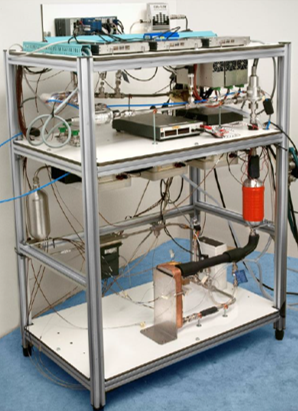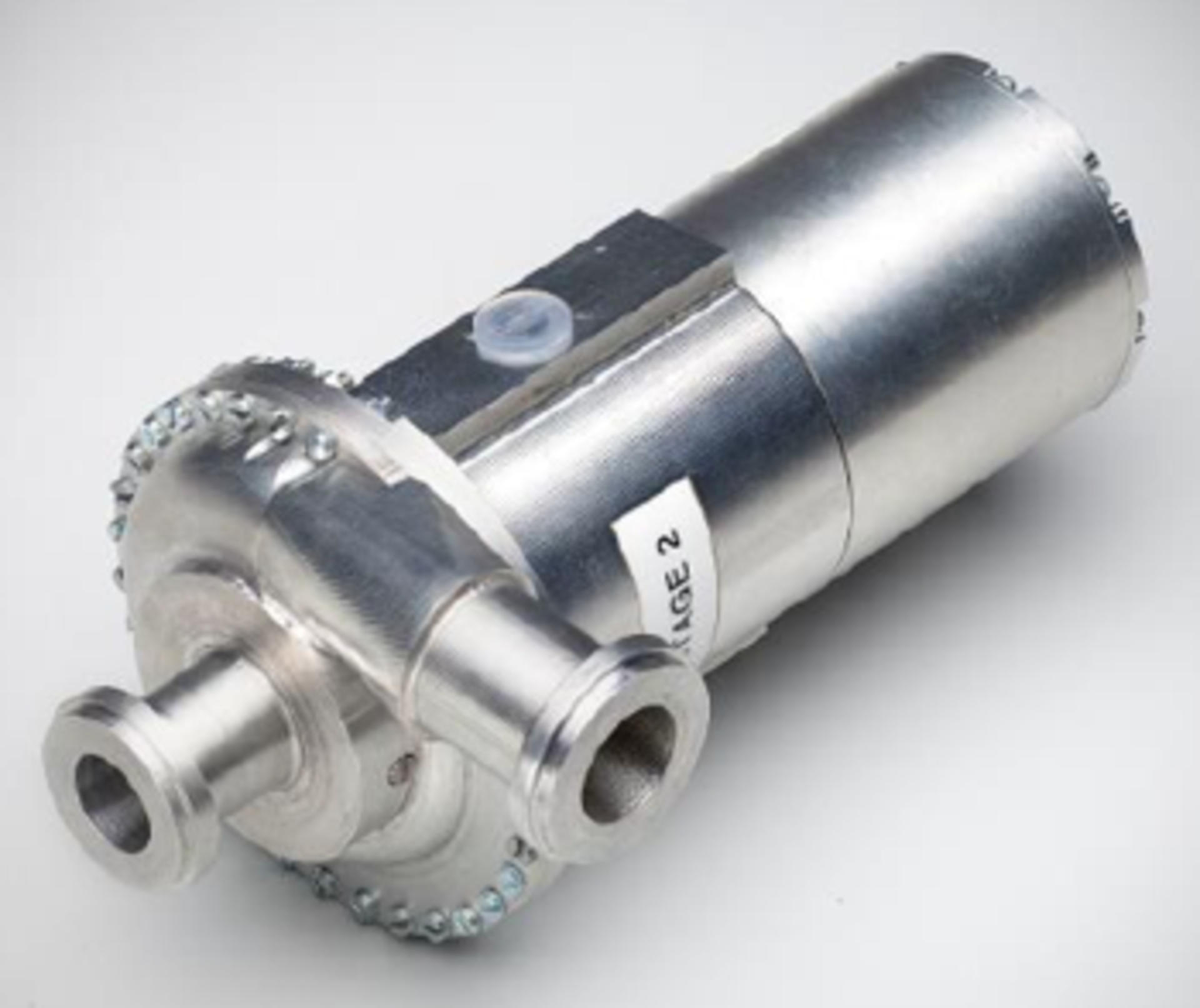Heat pump conceptual study and design
| Programme: | TRP Workplan | Achieved TRL: | 3 |
| Reference: | T720-092MC | Closure: | 2016 |
| Contractor(s): | NLR (NL), Celeroton (CH) | ||
Maximum spacecraft radiator size is fixed based on the available launch volume. The methods to increase the heat rejection is to increase the surface area by using deployable radiators or to increase radiator temperature. The Heat Pump provides the capability of raising the radiator temperature above the temperature of the equipment where more heat can be rejected compared to a conventional radiator with the same surface area.

Objectives
The objective of this activity is to design and develop a Heat Pump system that is adaptable for Earth Observation, Exploration, Science and Telecommunication missions. In addition, a breadboard is manufactured and tested in order to validate the concept and to measurement the coefficient of performance.
Achievements and status
A breadboard with three novel electrically-driven high-speed compressors in a serial configuration has been designed and built. During the testing, the breadboard achieved a coefficient of performance of 2.6, which was considerably higher than the requirement of 2.
Benefits
Heat Pump allows to increase the power density of the spacecraft without increasing its volume. There is a very strong interest, in particular for Telecom applications to be used on High-throughput telecom satellites which have a high power dissipation payload.
Next steps
Possible funding from GSTP 6, ARTES or NEOSAT















 Germany
Germany
 Austria
Austria
 Belgium
Belgium
 Denmark
Denmark
 Spain
Spain
 Estonia
Estonia
 Finland
Finland
 France
France
 Greece
Greece
 Hungary
Hungary
 Ireland
Ireland
 Italy
Italy
 Luxembourg
Luxembourg
 Norway
Norway
 The Netherlands
The Netherlands
 Poland
Poland
 Portugal
Portugal
 Czechia
Czechia
 Romania
Romania
 United Kingdom
United Kingdom
 Slovenia
Slovenia
 Sweden
Sweden
 Switzerland
Switzerland




























